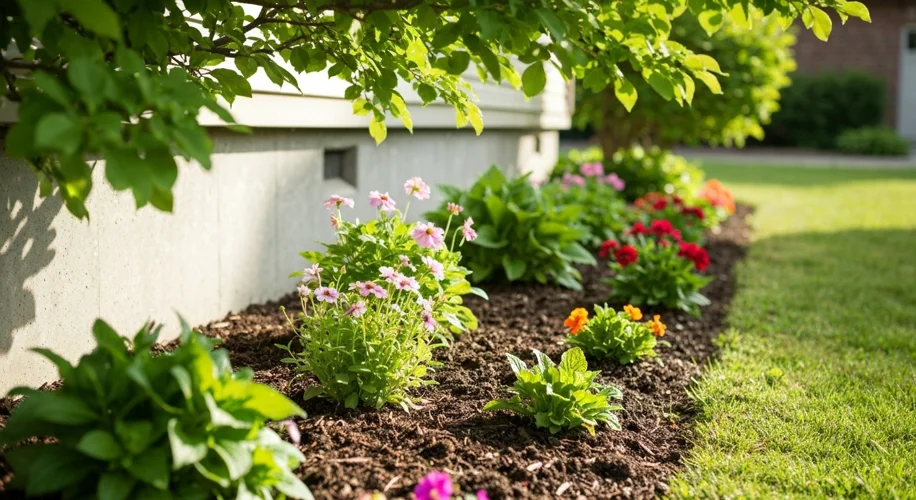As a home gardener, I’m always thinking about how plants interact with their environment, and that includes our homes! Recently, a question came up from someone looking to buy a house: what’s the deal with a flower bed being right up against the foundation, especially if it’s been there for years?
It’s a fair question, and it touches on a few important aspects of home maintenance and gardening.
The Foundation’s Best Friend: Good Drainage
Think of your home’s foundation as its base, its solid grounding. Like anything built, it needs to be kept dry to stay strong. Water is a powerful force, and while foundations are designed to withstand moisture, constant saturation can lead to problems over time. When a flower bed is placed too close to the foundation, it can essentially become a barrier to proper drainage. Instead of water flowing away from the house, it can pool against the foundation walls.
Why Pooling Water is a Concern
- Foundation Integrity: In colder climates, this trapped water can freeze and expand, a process called frost heave. Over many freeze-thaw cycles, this can cause stress and even cracks in the foundation. Even without freezing, prolonged moisture can contribute to the deterioration of certain foundation materials.
-
Mold and Mildew: Damp environments are breeding grounds for mold and mildew. If moisture seeps into basement walls or crawl spaces that are adjacent to the flower bed, it can create unhealthy conditions inside the home.
-
Pest Attractions: Standing water and consistently damp soil can attract certain pests, like mosquitoes and slugs. While mites are more commonly associated with plant health issues in dry conditions, persistent dampness can contribute to fungal growth on plants, which in turn can attract other garden visitors.
Mulch: A Double-Edged Sword
Mulch is fantastic for gardens! It helps retain soil moisture, suppress weeds, and regulate soil temperature. However, when mulch is piled high directly against a house foundation and flower bed soil, it can exacerbate the drainage issue. It acts like a sponge, holding onto that water and keeping it in contact with the foundation longer.
Years in Place: What It Means
If a flower bed has been in place for several years and there haven’t been obvious signs of foundation trouble, that’s a good sign. However, it doesn’t mean there are no long-term risks. The effects of consistent moisture can be slow and cumulative. It’s like getting a little bit of rust on a car – you might not notice it at first, but over time, it can weaken the metal.
What to Look For and Consider
- Observe Drainage: After a good rain, does water seem to sit near the foundation where the flower bed is?
- Check for Cracks: Inspect the foundation walls, both inside and outside, for any new or widening cracks.
- Moisture Levels: Feel the soil in the flower bed. Is it consistently soggy, even a day or two after rain?
- Slope: Does the ground slope away from your house? This is the most crucial factor.
Best Practices for Foundation Health
Gardeners often recommend maintaining a space, perhaps 6-12 inches, between the foundation and the soil line of your flower beds. This allows for better airflow and ensures water can drain away freely. If you have a flower bed right against the house, consider gently pulling back the soil and mulch away from the foundation wall. Ensure your gutters are also functioning properly and directing water away from the house.
It’s all about creating a healthy environment for both your home and your plants!

